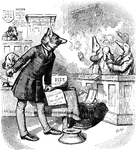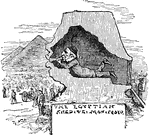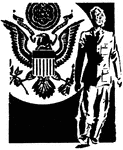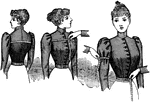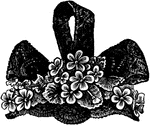
Round Front Primary Mid Vowel
Vowels have a wide, firm, and free channel, whereby the breath is modified without friction or sibilation.…

Round Front Primary Low Vowel
Vowels have a wide, firm, and free channel, whereby the breath is modified without friction or sibilation.…

Round Front Wide High Vowel
Vowels have a wide, firm, and free channel, whereby the breath is modified without friction or sibilation.…

Round Front Wide Mid Vowel
Vowels have a wide, firm, and free channel, whereby the breath is modified without friction or sibilation.…
Round Front Wide Low Vowel
Vowels have a wide, firm, and free channel, whereby the breath is modified without friction or sibilation.…

Indian Corn
Maize known as corn by most English-speakers, is a cereal grain domesticated in Mesoamerica and subsequently…
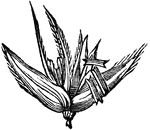
Indian Corn
Maize known as corn by most English-speakers, is a cereal grain domesticated in Mesoamerica and subsequently…
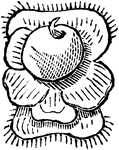
Indian Corn
Maize known as corn by most English-speakers, is a cereal grain domesticated in Mesoamerica and subsequently…

Indian Corn
Maize known as corn by most English-speakers, is a cereal grain domesticated in Mesoamerica and subsequently…

Attack of the Gunboats at Fort Donelson
Attack of the gunboats at Fort Donelson, one of the most influential battles in American history. This…

Jacob Pocock Farm-house
View of the farm-house of Jacob Pocock, near Bath, England, the second training place of the "Bencia…

Jacob Pocock Farm-house
View of the farm-house of Jacob Pocock, near Bath, England, the second training place of the "Bencia…

Cleveland in Corrupt Democratic Party
Grover Cleveland as the front for the corruption of the Democratic Party. John Kelly: "I'll let them…
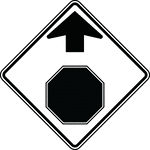
Stop Ahead, Black and White
The Advance Traffic Control symbol signs includes the Stop Ahead sign. These signs shall be installed…

Stop Ahead, Color
The Advance Traffic Control symbol signs includes the Stop Ahead sign. These signs shall be installed…
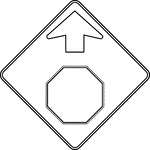
Stop Ahead, Outline
The Advance Traffic Control symbol signs includes the Stop Ahead sign. These signs shall be installed…

Stop Ahead, Silhouette
The Advance Traffic Control symbol signs includes the Stop Ahead sign. These signs shall be installed…

Yield Ahead, Black and White
The Advance Traffic Control symbol signs includes the Yield Ahead sign. These signs shall be installed…

Yield Ahead, Color
The Advance Traffic Control symbol signs includes the Yield Ahead sign. These signs shall be installed…
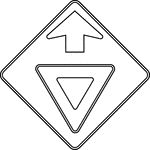
Yield Ahead, Outline
The Advance Traffic Control symbol signs includes the Yield Ahead sign. These signs shall be installed…

Yield Ahead, Silhouette
The Advance Traffic Control symbol signs includes the Yield Ahead sign. These signs shall be installed…
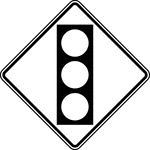
Signal Ahead, Black and White
The Advance Traffic Control symbol signs includes the Signal Ahead sign. These signs shall be installed…
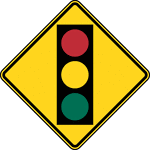
Signal Ahead, Color
The Advance Traffic Control symbol signs includes the Signal Ahead sign. These signs shall be installed…

Signal Ahead, Outline
The Advance Traffic Control symbol signs includes the Signal Ahead sign. These signs shall be installed…

Signal Ahead, Silhouette
The Advance Traffic Control symbol signs includes the Signal Ahead sign. These signs shall be installed…
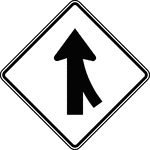
Merge, Black and White
A Merge sign may be used to warn road users on the major roadway that merging movements might be encountered…
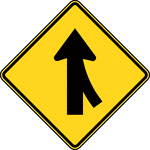
Merge, Color
A Merge sign may be used to warn road users on the major roadway that merging movements might be encountered…
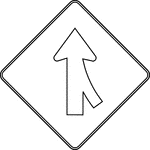
Merge, Outline
A Merge sign may be used to warn road users on the major roadway that merging movements might be encountered…

Merge, Silhouette
A Merge sign may be used to warn road users on the major roadway that merging movements might be encountered…
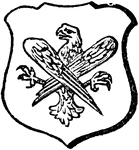
Eagle en Arrière
"Argent, an eagle proper en arrière. EN ARRIÈRE. An expression borrowed from the French,…
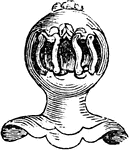
Grated Helmet Direct
"The position of the helmet is a mark of distinction. The direct front view of the grated helmet belongs…
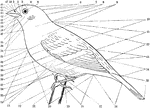
Topography of a Bird
"fig. 25 - Topography of a Bird. 1, forehead (frons). 2, lore. 3, circumocular region. 4, crown (vertex).…

Christ Before Caiaphas
Christ Before Caiaphas is an engraving that was created by German artist Albrecht Dürer. It is…
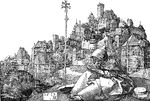
St. Anthony
This is an engraving of St. Anthony by German artist Albrecht Dürer in 1519. It shows a view of a view…

Flower Hat
This flower hat is curved in shape with a ribbon in the back and front. In its center lays a bouquet…

Lady's Bonnet
This Lady's bonnet is designed with a large layered ribbon tied in the front, and held in place by a…
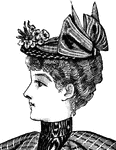
Late 19th Century Hat
This late 19th century hat is designed with a small bouquet of flowers in the front and a bow in the…
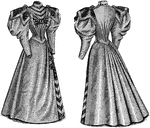
Late 19th Century Dress
This late 19th Century Dress is shown front and back. It is designed with puffed sleeves and a bow on…

Late 19th Century Dress
This late 19th century dress is made with puffed sleeves and an apron like drape over the front.

Late 19th Century Dress
This late 19th century dress is in a floral pattern with an apron like design in the front.

Late 19th Century Dress
This late 19th Century dress is in a floral pattern with an apron design that drapes in the front.
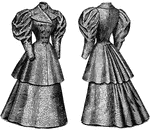
Double Breasted Coat and Skirt
This double breasted coat and skirt is a late 19th century design with puffed sleeves. It is shown front…

Coat and Skirt
This coat and skirt is a late 19th century design with puffed sleeves. It is shown front and back.
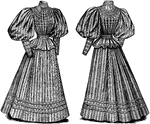
Late 19th Century Dress
This late 19th century dress is fitted with puffed sleeves. It is shown front and back.

Lady's Coat
This lady's coat is a late 19th century design shown in it's front and back view. It is fitted with…

Cutaway Coat
This cutaway coat is a late 19th century design with puffed sleeves and three buttons. It is shown in…

Fitted Jacket
The fitted jacket is a lady's late 19th century design shown in front and back views. It has puffed…

Lady's Blouse
This lady's blouse is a late 19th century design shown in front and back view. It has puffed sleeves,…

Layered Skirt
This layered skirt is a late 19th century design shown in its front and back view. It has a peplum over…

Flounce Skirt
This flounce skirt is a late 19th century design shown in front and back view. It has a flounce or ripple…

Long Rippled Skirt
This long rippled skirt is a late 19th century design. It has a ruffle like material that drapes the…

Girl's Summer Dress
This girl's summer dress is a late 19th century design. The dress has a large collar, buttons in the…
